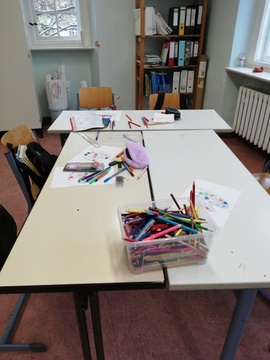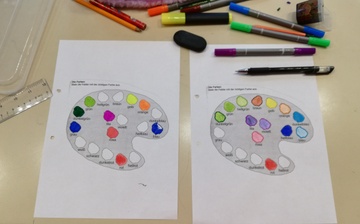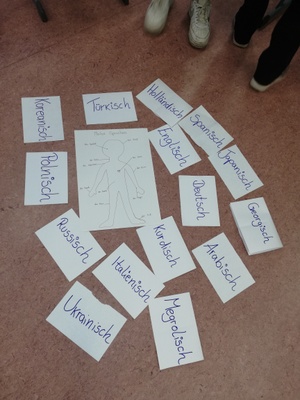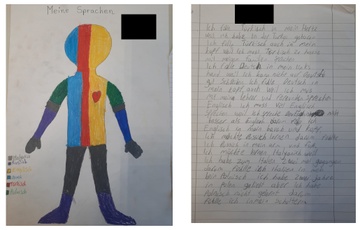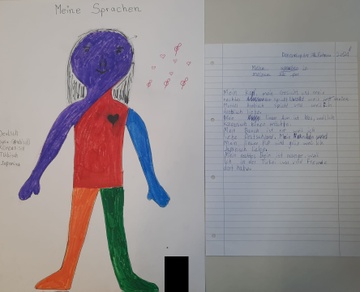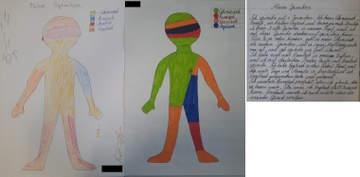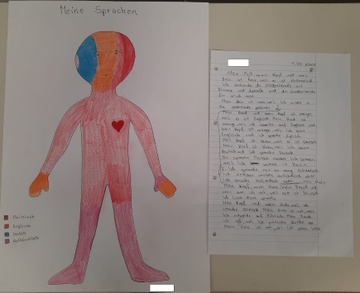"Welcome Class" 1: Language Portraits
Description of the teaching development project “Language portraits”
Title: “Language portraits to make multilingualism visible in a welcome class”
(welcome classes are separate classes for newly arrived students without any or little German proficiency)
Development goal: Raising awareness of individual and shared linguistic diversity in the group, strengthening self-esteem
Teaching measures
- Vocabulary activation on colors, body parts and languages
- Collecting possible phrases for describing the portraits (Krumm 2013, Krumm & Jenkins 2001) on the board
- Coloring the individual portraits
- Oral description of own portrait in a circle of chairs
- Questions from classmates and teacher/conversation
- Voluntarily done and with appropriate language skills: written description
Table during break time
Pupil work on color names
Results of collecting the group's languages
Accompanying research/ evaluation
- Photo documentation - document analysis of the pictures and learner texts
- Analysis of the transcripts of the pupils oral descriptions
- Observations and reflections of the teacher and the external researcher from the university
Results
The pictures and texts show different language profiles in connection with the children's migration experience. They describe different contexts of use of the individual languages, in school and in everyday life outside of school. The descriptions also show concrete competence assessments and different motives and attitudes towards learning (additional) languages.
The teacher gained the following insights:
The language portrait method can also be used well in beginner classes to record language diversity and an awareness of multilingualism. By discussing the language portraits, the pupils get to know each other better and their self-esteem is strengthened. The language learning experience and the “ desire for languages” can be easily recognized and reflection processes are stimulated.
However, not all pupils understood the complexity of the task and it was not always possible to localize the languages in the body, but that is also a statement. For some traumatized pupils, this task is too demanding. The texts might have been more meaningful if they had a better knowledge of German.
The task of assigning the languages to individual body parts in terms of their significance was attempted by these children, but the references are not always coherent in the descriptions. It could be considered in further sessions whether this requirement is rather restrictive and what alternatives there are.
Bibliography
Krumm, H.-J. (2013). "Multilingualism and identity." Multilingualism and language diversity in urban areas: Acquisition, identities, space, education. 1:165-176.
Krumm, H.-J. & Jenkins, E.-M. (2001). Kinder und ihre Sprachen - lebendige Mehrsprachigkeit: Sprachenporträts. Wien: Eviva.
Examples (click on the picture to get a bigger version)
Language Portrait Pupil 1
Language Portrait Pupil 2
Language Portrait Pupil 3
Language Portrait Pupil 4

